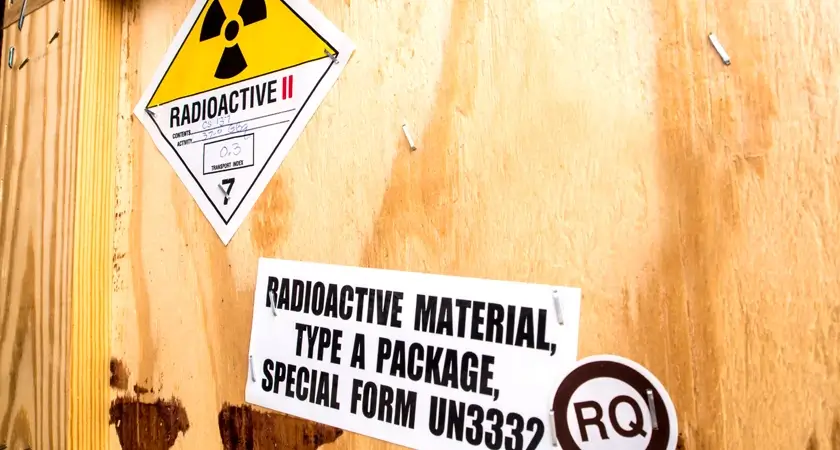Using Moving Box Labels for a More Manageable Move

There’s a science to labeling boxes. Maybe not the hard science of biochemistry, but a science nonetheless that can save oodles of time unpacking.
Less time unpacking = more time to enjoy your new place, binge-watch your favorite shows, and resume your everyday life, whatever that may be.
Without labels, you may have to dig through five boxes labeled “Miscellaneous” just to find your favorite coffee mug.
This guide explains everything you need to know about labeling moving boxes effectively. By the end, you’ll have a system that works smarter — not harder — for your next move.
Why Proper Labeling Matters
A clear labeling system offers immediate benefits, like:
- Saving time during unpacking: You’ll know where each box belongs before it even comes off the truck.
- Preventing damage: Fragile items get extra care when correctly labeled.
- Staying organized: A well-thought-out system eliminates confusion, especially if multiple people are helping you move.
Now, let’s get down to the details of labeling boxes.
1. Gather Your Labeling Supplies
- Markers: Choose permanent markers with bold colors like black, red, or blue.
- Labels or Stickers: Pre-made “Fragile,” “Kitchen,” or room-specific stickers can save time.
- Colored Tape: Bonus points for using tape to color-code boxes by room.
- Label Printer: Label printers work well if you prefer a typed finish.
Always keep a roll of clear packing tape handy. It protects handwritten or printed labels from smudging during the move.
2. Develop a Labeling System
- Label each box with the name of the room where it belongs. This works well for moves to larger homes.
- Assign a color to each room and use colored tape or labels to match.
- Create an inventory list, so you know exactly what’s in each box. You can even number your boxes and write down the number corresponding to items on the list.
3. Labeling Tips
- Mark every side of the box so you can quickly identify its contents, no matter which way it’s facing. Also, if the top of the box gets covered or ripped during transportation, the label will still be visible.
- Instead of labeling a box “Kitchen,” be more specific and list out essential items like “Plates” or “Silverware.”
- Make sure your handwriting is clear and easy to read from a distance.
- Write “Fragile” on boxes containing delicate items, so movers know to handle them carefully.
4. Label as You Pack
- Don’t wait until all your boxes are packed to start labeling. Label each box as you pack it so you don’t forget what’s inside.
- Labeling as you go also helps keep items organized during packing.
5. Label Boxes for Unpacking Priority
- If there are certain items you’ll need immediately, like a change of clothes or toiletries, label those boxes as “Open First” or “Unpack First.”
- This will save you from digging through multiple boxes to find the essentials. Similarly, label boxes as “Open Last” for items you won’t need until the very end of your move.
6. Labeling Electronic Cords and Parts
- Use colored stickers or labels to identify cords and parts for electronic devices.
- Take a picture of how the cords are connected before disconnecting them so it’s easier to set up at your new place.
- Keep all cords labeled and stored in one designated box.
7. Use a Digital Tracking System
- If you prefer a high-tech approach, use a digital tracking system to label and keep track of your boxes.
- This can be done through various apps or even just creating a spreadsheet on your computer.
8. Communicate with the Movers
- Make sure to communicate your labeling system with the movers, so they know where each box belongs.
- This will save time and prevent confusion on moving day.
FAQs: Labeling for Moving
Q: What’s the best type of marker to use for labeling boxes?
Permanent markers with bold, dark ink work best, as they’re less likely to smear or fade. Black is a common choice, but using multiple colors can help with color-coding systems.
Q: Should I label boxes on the top or the sides?
Label all sides and the top of the box. This ensures your labels are visible no matter how the boxes are stacked or stored.
Q: How can I avoid labels falling off during the move?
Secure handwritten labels with clear packing tape, or use adhesive labels or stickers with strong backing to prevent them from peeling off.
Q: What’s the easiest way to color-code boxes?
Use colored tape or pre-printed colored labels. Assign one color to each room and place matching tape and labels on each box for easy identification.
Q: How specific should I be when labeling boxes?
The more specific, the better. Instead of writing “Bedroom,” include details like “Bedroom – Bed Sheets” or “Bedroom – Books” to make unpacking more efficient.
Q: Is it worth numbering my boxes?
Yes! Assigning each box a number and creating a corresponding inventory list can help track items and ensure they’re not lost during the move.
Q: What should I do if I forget to label a box?
If you miss labeling a box, check its contents and add a clear label before stacking or loading it into the moving truck. Proper labeling ensures smooth unpacking later.
More Moving Tips

0 Comments